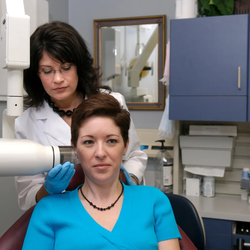Understanding Bite Problems
in Rancho Bernardo
Diagnostic imaging shows how the teeth, jaw, and muscles fit and work together. If an occlusion disorder is present and ignored, the progressive damage may sometimes be painful and debilitating.

Signs of a Jaw Disorder:
- A sore, stiff jaw
- Misaligned teeth
- Teeth that are worn, broken, or cracked
- Teeth that have become loose for no apparent reason
- A jaw that clicks or pops when chewing, yawning, or talking
- (Bruxism) or clenching when asleep or stressed
- Receding gum lines

Progressive damage caused by occlusal can lead to:
- TMJ disease/ (TMD).
- Tooth fracture
- Vertical root fracture/premature tooth loss
- Excessive bone loss
- Muscle soreness
- Muscle fatigue (cannot chew gum/eat steak)
- Headaches
Treatment of occlusal will slow the damage and improve chewing. 80 to 85 % find muscles will heal and adapt to the improved bite arrangement.
Excessive damage may require restorative treatment to protect and seal the tooth structure.

T-Scan Occlusal Analysis System will assess bite problems and provide precise information for an accurate treatment plan specific to your bite problem. Precise imaging shows where your teeth are touching, helping to ensure the bite with your new crowns, bridges, or implants is perfect.

EMG Technology - Electromyography (EMG) is a digital tool to evaluate the jaw muscles' strength, activity, and movement.
This quick, effective diagnostic tool helps us learn more about your bite and diagnose any underlying problems. EMG, in conjunction with the T-Scan technology, ensures more effective results.